Introduction
In the quest for sustainable agriculture and the need to feed a growing global population, innovative farming methods have taken center stage. Aquaponics and hydroponics are two revolutionary approaches that are reshaping the way we think about farming. By combining aquaculture and hydroponics, these systems not only produce high yields of fresh, healthy crops but also conserve resources and reduce environmental impact. In this article, we will delve into the world of aquaponics and hydroponics, exploring their principles, benefits, and the exciting possibilities they hold for the future of farming.
As the world grapples with the challenge of ensuring sustainable agriculture to feed an ever-expanding global population, innovative farming methods have emerged as crucial solutions to meet this demand. Among these game-changers, aquaponics and hydroponics have risen to the forefront, offering innovative and efficient alternatives that are redefining the landscape of modern agriculture.
At their core, both aquaponics and hydroponics represent a break from traditional soil-based farming. These systems embrace a soilless approach, emphasizing the cultivation of crops in nutrient-rich water solutions. This fundamental shift in methodology carries a host of benefits that extend far beyond conventional farming practices.
Aquaponics, in particular, marries aquaculture and hydroponics, creating a symbiotic relationship between fish and plants. In this closed-loop system, fish waste provides a natural source of nutrients for the plants, while the plants, in turn, filter and purify the water for the fish. This harmonious partnership not only reduces waste but also conserves water and promotes efficient resource utilization. It’s a remarkable example of nature-inspired farming, where the output of one element becomes the input for another, fostering sustainability at its core.
Similarly, hydroponics revolutionizes the way we grow crops by delivering precise control over nutrient levels, pH, and environmental factors. In these soilless systems, plants are grown in a carefully balanced nutrient solution, allowing for optimal growth rates and increased yields. Moreover, hydroponics eliminates the need for vast expanses of arable land, making it possible to cultivate crops in urban environments or regions with limited available land resources.
The benefits of aquaponics and hydroponics extend beyond resource efficiency. These methods are highly adaptable and can be implemented in diverse settings, from small-scale urban farms to large commercial operations. Additionally, they reduce the environmental impact associated with traditional agriculture, such as soil degradation and nutrient runoff into waterways.
In the pursuit of sustainable agriculture, these innovative approaches open up exciting possibilities for the future. They not only enable us to grow more food with fewer resources but also challenge us to think creatively about how we can integrate technology and natural processes to meet the global demand for fresh and nutritious produce.
As we delve deeper into the world of aquaponics and hydroponics in this article, we will explore the principles that underpin these systems, uncover their numerous benefits, and shed light on the exciting potential they hold for transforming the way we farm. These methods are not just alternatives; they are the harbingers of a more sustainable, efficient, and environmentally friendly future for agriculture.
To delve further into this matter, we encourage you to check out the additional resources provided here: FS1351: Introduction to Aquaponics Systems (Rutgers NJAES)
Aquaponics is a sustainable farming method that merges aquaculture (the cultivation of fish or other aquatic animals) with hydroponics (the cultivation of plants in water). In an aquaponics system, fish are raised in a tank, and their nutrient-rich waste provides the essential nutrients needed for plant growth. The plants, in turn, filter and purify the water, which is then returned to the fish tank. This closed-loop system creates a harmonious ecosystem that benefits both the fish and the plants.
Aquaponics represents a fascinating synergy between aquaculture and hydroponics, embodying sustainable farming practices that hold significant promise for the future of agriculture. At its core, aquaponics is a system of balance and reciprocity, where the mutual relationship between fish and plants forms the foundation of a thriving ecosystem.
Nutrient Recycling: Central to the success of aquaponics is the concept of nutrient recycling. Fish waste, which is rich in essential nutrients like nitrogen, provides a natural fertilizer for the plants. Instead of disposing of this waste, as is common in traditional aquaculture, aquaponics harnesses its potential. The plants, grown hydroponically, take up these nutrients, purifying the water in the process. This nutrient-rich water is then returned to the fish tank, completing a sustainable and closed-loop cycle.
Water Efficiency: Aquaponics is renowned for its water efficiency. Unlike conventional soil-based agriculture, which requires significant water for irrigation, aquaponics recirculates water within the system. This means that the water needs for plant growth are drastically reduced compared to traditional farming. In a world where water scarcity is a growing concern, aquaponics offers a sustainable solution by maximizing water utilization.
Natural Pest Control: The balanced ecosystem of aquaponics also extends to pest management. By maintaining a healthy and diverse environment, these systems are naturally more resistant to pests and diseases. This reduces the need for chemical pesticides, aligning with the principles of sustainable and organic agriculture.
Space Efficiency: Aquaponics is inherently space-efficient, making it well-suited for urban and constrained environments. Vertical aquaponic systems, in particular, take advantage of vertical space, allowing for higher yields per square foot compared to traditional farming. This adaptability is a valuable asset in addressing the challenges of feeding a growing global population.
Year-Round Production: Aquaponics offers year-round production, unaffected by seasonal variations in temperature and weather. This consistent production streamlines supply chains, reduces reliance on long-distance transportation, and promotes local food production, all of which have positive economic and environmental implications.
Learning and Innovation: Beyond its practical applications, aquaponics also serves as an educational tool. It provides a hands-on platform for learning about ecosystem dynamics, biology, and sustainable agriculture. Schools, communities, and research institutions embrace aquaponics as a means to explore innovative solutions for food production and environmental stewardship.
In conclusion, aquaponics embodies a sustainable and harmonious approach to farming, where fish and plants collaborate in a mutually beneficial relationship. It represents an ecologically sound solution that maximizes resource utilization, minimizes waste, and fosters resilience in the face of environmental challenges. As the world grapples with the need for more sustainable agricultural practices, aquaponics stands as a testament to the potential of closed-loop systems that benefit both the environment and humanity.
You can also read more about this here: Aquaponics – for a sustainable future / Hydroponics & Aquaponics
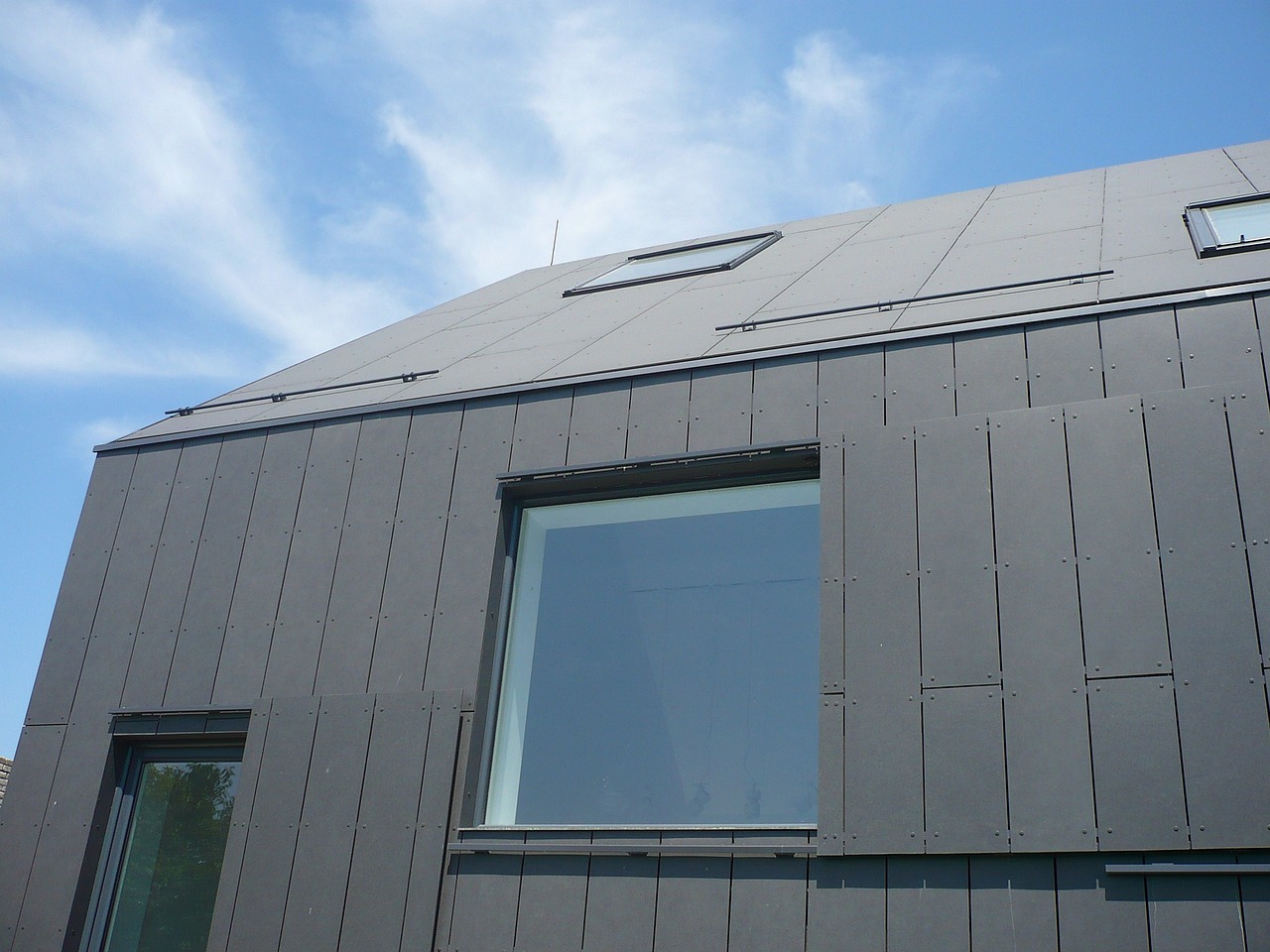
Hydroponics is a method of growing plants without soil. Instead, plants are placed in a nutrient-rich water solution, which provides all the essential nutrients they need for growth. This controlled environment allows for precise control over factors such as pH levels, temperature, and nutrient concentration, resulting in faster growth and increased crop yields.
Hydroponics, as a soil-less cultivation method, represents a remarkable departure from traditional farming practices. It’s a leap into the future of agriculture, driven by innovation and a profound understanding of plant biology.
At its core, hydroponics revolves around the art of providing plants with exactly what they need, precisely when they need it. In traditional soil-based farming, plants often struggle to access nutrients buried deep in the earth. Hydroponics eliminates this challenge by immersing plant roots in a nutrient-rich water solution, ensuring a consistent supply of essential elements.
This controlled environment offers numerous advantages. pH levels, crucial for nutrient uptake, can be meticulously maintained at optimal ranges, enabling plants to absorb nutrients with unprecedented efficiency. Temperature and humidity can be fine-tuned to create the perfect conditions for growth, regardless of external weather patterns. Nutrient concentration can be adjusted to meet the specific requirements of different plant species, promoting healthier, more robust crops.
One of the most striking benefits of hydroponics is the acceleration of growth rates. With all essential nutrients readily available, plants can channel their energy into rapid development rather than expending effort on foraging for nutrients in the soil. This translates into shorter growth cycles and increased crop yields. In a world where food security is a growing concern, hydroponics offers a glimmer of hope for meeting the escalating demand for nutritious, sustainable produce.
Moreover, hydroponics has a significantly reduced environmental footprint compared to traditional agriculture. It uses less water, recirculating nutrient solutions to minimize waste. Pesticide and herbicide use can be reduced, thanks to the controlled environment that limits exposure to pests and weeds. The absence of soil also means less soil erosion, preserving this precious resource.
In the quest for sustainable agriculture, hydroponics stands as a shining example of how innovation can revolutionize the way we feed the world. It transcends the limitations of soil, enabling us to cultivate crops efficiently, conserve resources, and nourish a growing global population. As technology continues to advance, hydroponics is poised to play an even more prominent role in the future of farming, ushering in a new era of food production that is as sustainable as it is productive.
Explore this link for a more extensive examination of the topic: Aquaculture and Aquaponics | National Agricultural Library
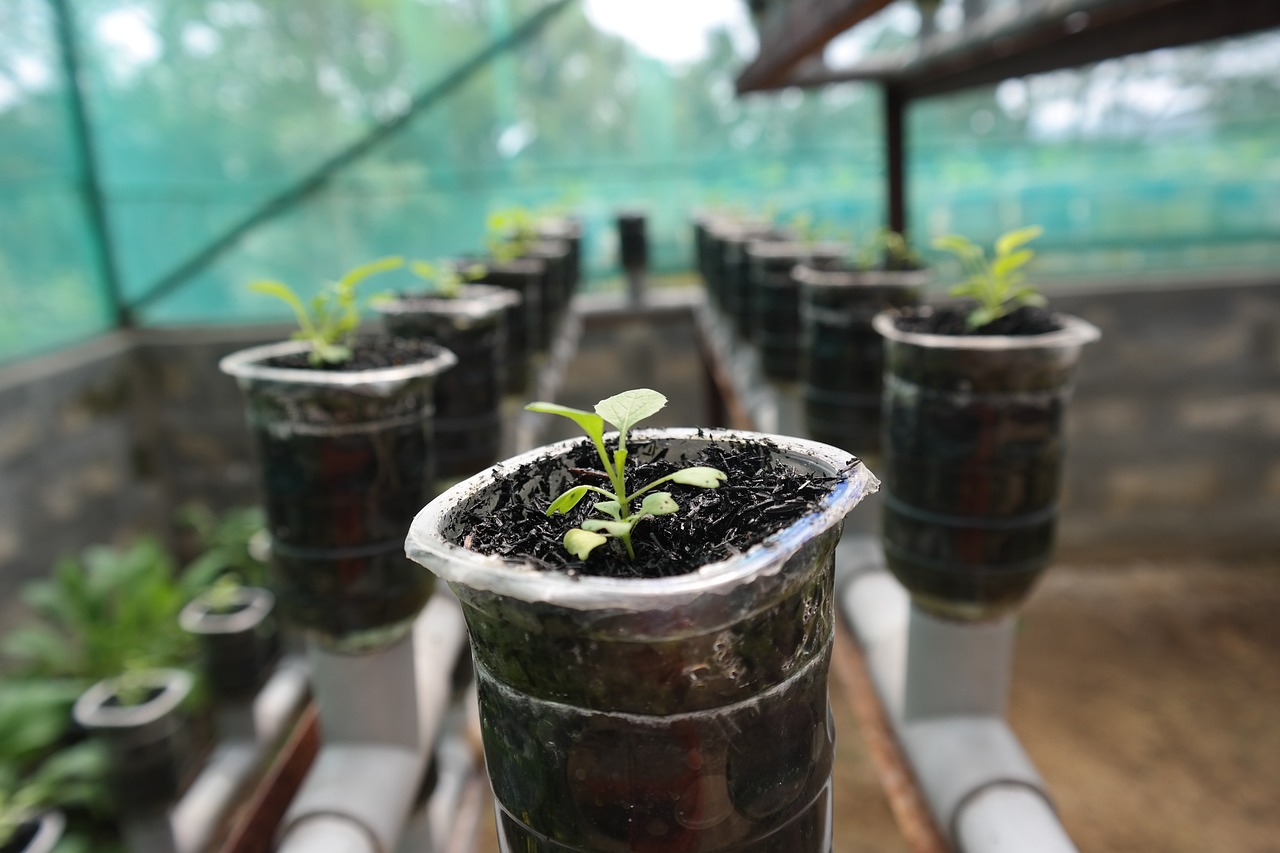
Both aquaponics and hydroponics use significantly less water compared to traditional soil-based farming. The closed-loop nature of aquaponics minimizes water wastage, making it an excellent choice for regions facing water scarcity.
Both aquaponics and hydroponics offer a sustainable alternative to traditional soil-based farming, with water conservation at the forefront of their advantages. This efficient use of water resources plays a pivotal role in addressing the global challenge of water scarcity.
Precise Water Control: In hydroponics, nutrient-rich water is delivered directly to the plant roots, allowing for precise control over water usage. This prevents over-irrigation, a common issue in traditional farming, where much of the water may be lost to evaporation or runoff.
Recirculation in Aquaponics: Aquaponics takes water conservation a step further by establishing a closed-loop system. In this integrated approach, fish waste provides nutrients to plants, and the plants filter and purify the water for the fish. This recycling of water not only minimizes waste but also ensures efficient nutrient cycling.
Drought Resilience: As the world grapples with the increasing frequency and severity of droughts, aquaponics and hydroponics offer a lifeline. Their ability to operate with significantly less water makes them a viable option for regions susceptible to water shortages, helping ensure food production even during dry spells.
Reduced Pollution: Traditional farming often involves the use of chemical fertilizers and pesticides, which can leach into water sources, leading to pollution. Aquaponics and hydroponics reduce the need for such chemicals, further safeguarding water quality.
Year-Round Cultivation: Controlled environments in hydroponics and aquaponics allow for year-round cultivation. This consistent production eliminates the need for seasonal crop rotations, which may require additional water for soil preparation and irrigation.
Space Efficiency: Hydroponic and aquaponic systems can be set up vertically or in compact spaces, optimizing land use. This spatial efficiency contributes to reduced water needs per unit of production.
Learning Opportunities: Implementing these soil-less farming techniques often involves a learning curve, but it also presents opportunities for education and skill development in water-efficient agriculture, empowering communities to tackle water scarcity proactively.
Research and Innovation: The adoption of hydroponics and aquaponics encourages research and innovation in the field of agriculture. Scientists and farmers continually develop new techniques and technologies to further improve water efficiency.
Economic Viability: As water becomes scarcer and more expensive, the economic viability of aquaponics and hydroponics becomes increasingly evident. Though the initial setup costs may be higher, the long-term savings on water bills can make these systems financially attractive.
Global Impact: Widespread adoption of aquaponics and hydroponics can have a significant global impact on water conservation. These systems offer a scalable solution to the growing water scarcity problem and contribute to a more sustainable and resilient agricultural future.
In conclusion, the transition from traditional soil-based farming to aquaponics and hydroponics is not only a response to the need for higher yields but also a conscientious choice to combat water scarcity. By minimizing water wastage, optimizing nutrient delivery, and embracing closed-loop systems, these innovative farming practices are ushering in a more sustainable era of agriculture—one that promises to thrive even in the face of mounting water challenges.
For additional details, consider exploring the related content available here Aquaponics – an overview | ScienceDirect Topics

Hydroponics and aquaponics systems can be set up indoors or in controlled environments, allowing for year-round crop production regardless of weather conditions.
Hydroponics and aquaponics systems, with their ability to transcend the limitations of traditional soil-based farming, are revolutionizing agriculture by providing consistent year-round crop production regardless of the unpredictability of weather conditions.
Climate-Independent Agriculture
One of the standout features of hydroponics and aquaponics is their capacity to create a controlled and stable environment for plant growth. These systems are commonly set up indoors or in greenhouses, where temperature, humidity, and light can be meticulously managed. This climate independence means that crops can be cultivated in regions with harsh climates, extreme temperatures, or limited sunlight, enabling year-round production in places where traditional farming may be challenging.
Maximizing Crop Yield and Quality
The controlled environments in hydroponics and aquaponics systems offer a level of precision and optimization that is difficult to achieve in outdoor farming. Growers can fine-tune factors such as nutrient concentrations, pH levels, and lighting conditions to maximize crop yield and quality. This results in consistent, high-quality produce that meets the demands of consumers and markets year-round.
Drought Resilience
As climate change intensifies, droughts and water scarcity are becoming increasingly common in many agricultural regions. Hydroponics and aquaponics significantly reduce water usage compared to traditional soil-based farming. In hydroponics, water is recirculated through the system, minimizing waste. In aquaponics, the water is continuously cycled between the fish tanks and the plant beds, creating a sustainable and closed-loop system. This efficient use of water resources enhances drought resilience and ensures a stable supply of crops regardless of water availability.
Reduced Pest and Disease Pressure
Indoor and controlled environments in hydroponics and aquaponics also provide a level of protection against pests and diseases. By eliminating exposure to the open environment, these systems reduce the risk of infestations and the need for chemical pesticides. This not only benefits crop health but also aligns with sustainable and environmentally friendly farming practices.
Local and Urban Farming
The versatility of hydroponics and aquaponics systems extends to their adaptability to various settings, including urban areas. These systems can be scaled down for urban farming, enabling fresh, locally grown produce to be cultivated right in the heart of cities. This proximity to urban centers reduces transportation distances, contributing to reduced carbon emissions and promoting food security in urban environments.
Educational Opportunities
Beyond their practical applications, hydroponics and aquaponics systems provide valuable educational opportunities. They are often used in schools and community projects to teach students and individuals about sustainable farming practices, biology, and environmental science. This knowledge fosters a deeper understanding of food production and promotes a connection to the sources of the food we consume.
In summary, hydroponics and aquaponics systems are transforming the agricultural landscape by enabling year-round crop production in controlled environments. These systems offer climate independence, maximize crop yield and quality, enhance drought resilience, reduce pest and disease pressure, support local and urban farming, and provide educational benefits. As our world grapples with the challenges of climate change, resource conservation, and food security, hydroponics and aquaponics represent a promising path toward more sustainable and resilient agriculture.
For a comprehensive look at this subject, we invite you to read more on this dedicated page: CEA Systems: the Means to Achieve Future Food Security … – Frontiers
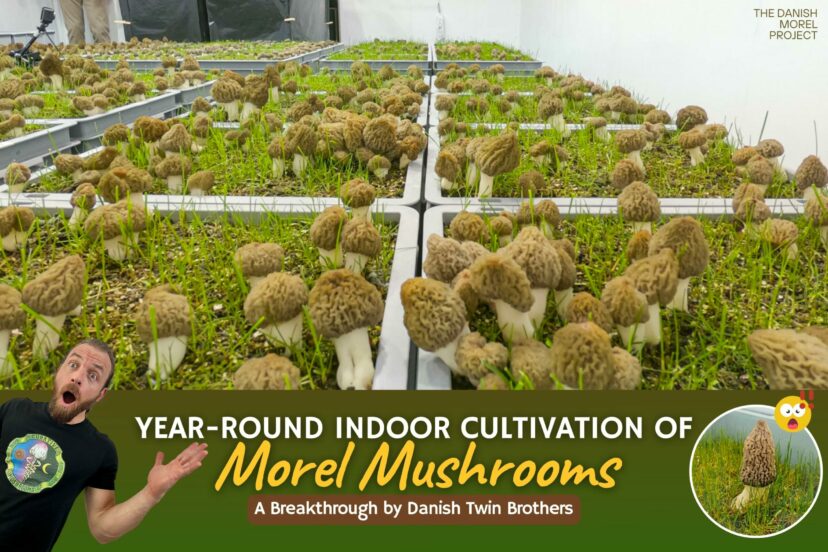
These systems often result in higher crop yields compared to traditional farming due to optimized growing conditions and the absence of soil-borne diseases.
The adoption of modern agricultural systems represents a significant leap forward in our quest to feed a rapidly growing global population. These systems, which include hydroponics, aquaponics, and vertical farming, are revolutionizing the way we produce food by harnessing cutting-edge technology and innovative practices. What sets them apart, among other advantages, is their consistent ability to deliver higher crop yields when compared to traditional farming methods. Let’s delve into the factors that contribute to these remarkable outcomes:
1. Controlled Environment: Modern agricultural systems provide an unprecedented level of control over the growing environment. In hydroponics and aquaponics, for instance, factors such as temperature, humidity, light, and nutrient levels are meticulously managed. This fine-tuned control ensures that plants receive optimal conditions for growth throughout their life cycle.
2. Precision Nutrition: These systems deliver nutrients directly to plant roots in a highly soluble and readily available form. This precision nutrition approach ensures that plants receive the right balance of essential elements exactly when they need them. It eliminates the need for plants to expend energy searching for nutrients in the soil, resulting in faster and more efficient growth.
3. Soil-Borne Disease Elimination: In traditional farming, soil-borne diseases can pose significant challenges, affecting both crop health and yield. Modern agricultural systems, however, completely eliminate soil from the equation. Plants grow in sterile, soilless substrates or nutrient-rich water, reducing the risk of disease and allowing for continuous cropping without the need for fallow periods.
4. Year-Round Cultivation: Traditional farming is often subject to seasonal constraints and climate limitations. Modern systems, particularly vertical farming and controlled environment agriculture, enable year-round cultivation. This extended growing season significantly boosts overall crop yields.
5. Space Efficiency: Vertical farming, in particular, maximizes space utilization by growing crops in stacked layers or vertical towers. This space-efficient design allows for the cultivation of more plants in a smaller footprint, increasing overall production per unit area.
6. Reduced Resource Consumption: These systems are designed to optimize resource use, including water and energy. Advanced technologies such as LED lighting and recirculating water systems minimize resource waste, making production more sustainable while contributing to higher yields.
7. Pest Control: Controlled environments also provide an effective barrier against pests and diseases. With reduced exposure to external threats, crops are less likely to suffer from pest damage or disease outbreaks, further contributing to yield stability.
8. Genetic Optimization: In modern systems, genetics are harnessed to develop crop varieties that are specifically suited for controlled environments. These varieties often exhibit rapid growth, high yields, and resilience to the conditions encountered in these systems.
9. Data-Driven Decision Making: Technology plays a pivotal role in these systems, allowing for real-time monitoring and data collection. This data-driven approach enables growers to make informed decisions about adjusting environmental parameters, further optimizing crop growth and yield.
10. Sustainability and Resource Efficiency: High yields in modern agricultural systems are not achieved at the expense of the environment. In fact, these systems often demonstrate higher resource efficiency and sustainability, using fewer inputs to produce more food.
In conclusion, modern agricultural systems represent a transformative shift in our approach to food production. Their capacity to consistently deliver higher crop yields, in addition to other benefits like reduced resource consumption and year-round cultivation, positions them as vital tools in addressing global food security challenges. As we continue to advance these technologies and practices, they hold the potential to play a pivotal role in shaping the future of agriculture, ensuring that we can feed a growing population sustainably and efficiently.
For a comprehensive look at this subject, we invite you to read more on this dedicated page: A Review on Hydroponics and the Technologies Associated for …

By using fewer pesticides and fertilizers, aquaponics and hydroponics reduce the environmental impact associated with traditional farming practices.
Aquaponics and hydroponics represent transformative approaches to agriculture that offer multiple environmental benefits. Expanding on the idea that “By using fewer pesticides and fertilizers, aquaponics and hydroponics reduce the environmental impact associated with traditional farming practices,” we can delve deeper into these advantages:
Minimizing Water Usage: Aquaponics and hydroponics are significantly more water-efficient than traditional farming. These systems recycle and reuse water, reducing overall consumption and minimizing the strain on freshwater resources, especially in water-scarce regions. This sustainable water management is essential for long-term agricultural viability.
Nutrient Recycling: Both aquaponics and hydroponics operate on nutrient recycling principles. In aquaponics, fish waste provides essential nutrients for plant growth, while hydroponics relies on nutrient-rich water solutions. This efficient nutrient utilization reduces the need for synthetic fertilizers, cutting down on the release of harmful chemicals into the environment.
Pesticide Reduction: The controlled indoor environments of aquaponic and hydroponic systems are less susceptible to pest infestations. As a result, these methods require fewer, if any, pesticides to manage pests and diseases. This reduction in chemical pesticide usage not only safeguards the environment but also promotes safer, more sustainable food production.
Soil Conservation: Traditional farming practices can lead to soil erosion, compaction, and degradation. Aquaponics and hydroponics eliminate the need for soil altogether, preserving fertile land and preventing soil-related environmental issues. This is particularly important as arable land becomes scarcer.
Lower Carbon Footprint: The reduced need for machinery, such as tractors and plows, in aquaponics and hydroponics results in a lower carbon footprint. Traditional agriculture relies heavily on fossil fuels for these activities, contributing to greenhouse gas emissions. The energy-efficient design of aquaponic and hydroponic systems can further reduce their environmental impact.
Year-Round Production: Aquaponics and hydroponics can operate year-round and in various geographic locations. This means reduced transportation of food over long distances, decreasing the carbon emissions associated with food distribution and storage.
Preservation of Biodiversity: Traditional agriculture often involves clearing land and disrupting natural habitats. In contrast, aquaponic and hydroponic systems can be integrated into urban areas, reducing the pressure on wild ecosystems and promoting urban biodiversity.
Resource Efficiency: These innovative systems are highly resource-efficient, making the most of available space and inputs. They can be tailored to suit specific crop needs and optimize resource use, leading to higher yields with less waste.
Educational Opportunities: Aquaponics and hydroponics serve as educational tools for sustainable agriculture. They offer valuable learning experiences for students and communities, fostering a greater understanding of environmentally responsible food production.
Technological Innovation: The ongoing development and adoption of aquaponic and hydroponic systems drive technological innovation in agriculture. This can lead to breakthroughs in sustainable farming practices that benefit both the environment and food security.
In summary, aquaponics and hydroponics are at the forefront of environmentally conscious agriculture. Their reduced water usage, minimized reliance on synthetic inputs, and decreased environmental footprint make them vital contributors to sustainable food production in an era of increasing environmental challenges. These methods represent not only a way to address the shortcomings of traditional farming but also an opportunity to redefine the future of agriculture in a more sustainable and eco-friendly manner.
Additionally, you can find further information on this topic by visiting this page: Vertical Farming – No Longer A Futuristic Concept : USDA ARS
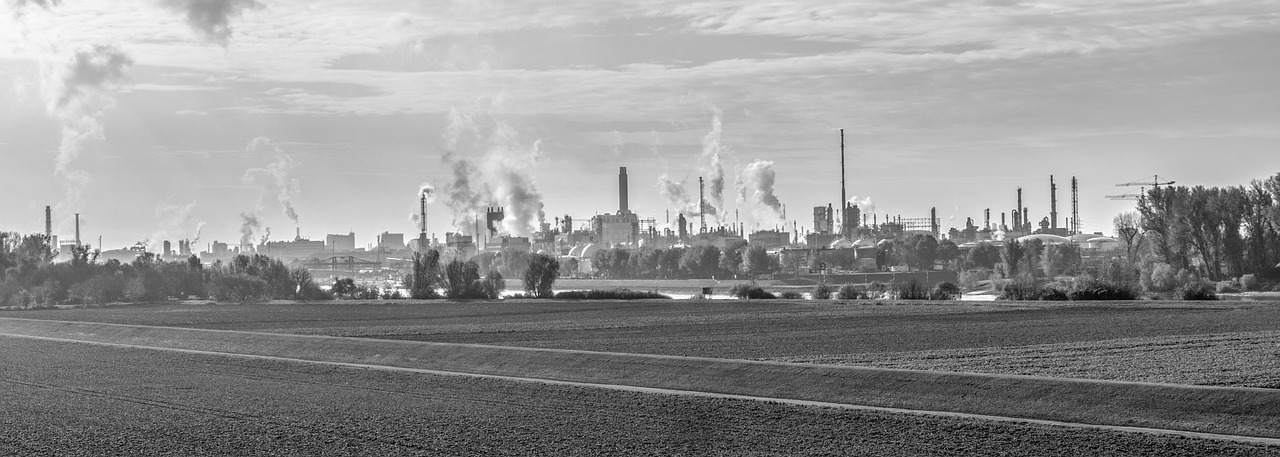
Aquaponics recycles nutrients between fish and plants, while hydroponics maximizes nutrient utilization, reducing the need for excessive fertilizers.
Aquaponics and hydroponics are innovative farming techniques that not only maximize nutrient utilization but also represent significant strides towards more sustainable and resource-efficient agriculture.
Aquaponics: This system is a beautiful example of nature-inspired synergy. It combines aquaculture (fish farming) with hydroponics (soilless plant cultivation) in a closed-loop ecosystem. In aquaponics, fish waste provides a rich source of nutrients for plants. As fish excrete ammonia, bacteria in the system convert it into nitrates, which serve as a natural fertilizer for the growing plants. These nutrient-rich waters are then circulated to nourish crops, effectively recycling nutrients between the aquatic and plant components of the system. This not only minimizes waste but also eliminates the need for synthetic fertilizers. Furthermore, the plants help purify the water for the fish, creating a harmonious, self-sustaining cycle.
Hydroponics: Hydroponic systems take a different approach to nutrient efficiency. Instead of relying on soil, plants grow in a soilless medium, such as perlite or coconut coir, and receive their nutrients through a precisely controlled nutrient solution. This approach allows growers to tailor the nutrient composition to the specific needs of each plant, optimizing growth and minimizing waste. Additionally, because the nutrient solution is recirculated and reused, there is minimal nutrient runoff, reducing the risk of water pollution. Hydroponics also enables the cultivation of crops in controlled environments, mitigating the impact of adverse weather conditions and enabling year-round production.
Both aquaponics and hydroponics offer numerous benefits beyond nutrient efficiency:
Water Conservation: These systems use significantly less water than traditional soil-based agriculture. Aquaponics recirculates water, minimizing consumption, while hydroponics can be designed to be highly water-efficient, reducing the strain on water resources.
Space Efficiency: Both methods are well-suited for urban and vertical farming, where space is limited. They maximize yield per square foot, making them ideal for producing fresh, local produce in densely populated areas.
Pesticide Reduction: Soilless growing environments are less susceptible to soil-borne pests and diseases, reducing the need for pesticides. This aligns with the principles of organic and sustainable farming.
Resource Efficiency: By optimizing nutrient delivery and minimizing waste, aquaponics and hydroponics contribute to resource conservation, including reduced fertilizer and pesticide use.
Year-Round Production: Controlled environments allow for year-round cultivation, reducing the dependence on seasonal crop cycles and providing a consistent supply of fresh produce.
Education and Research: These systems offer opportunities for education and research in agriculture, biology, and sustainability. They serve as valuable platforms for studying nutrient cycling, plant-fish interactions, and innovative farming techniques.
In conclusion, aquaponics and hydroponics represent two sides of the same coin in the quest for sustainable agriculture. They maximize nutrient utilization, reduce waste, and offer numerous environmental benefits. As we face the challenges of feeding a growing global population while minimizing the environmental impact of agriculture, these innovative systems serve as beacons of hope, demonstrating that sustainable and resource-efficient farming practices are not only possible but also transformative for the future of food production.
Additionally, you can find further information on this topic by visiting this page: Resource optimisation in aquaponics facility via process monitoring …

Implementing aquaponics and hydroponics can be challenging, as it requires specialized knowledge and equipment. Farmers may need training to effectively manage these systems.
Embracing aquaponics and hydroponics as innovative farming methods is a commendable step towards sustainable and resource-efficient agriculture. However, the successful implementation of these systems is not without its challenges, and it often necessitates specialized knowledge and equipment. Let’s delve into some of the complexities and considerations involved.
First and foremost, understanding the intricacies of aquaponics and hydroponics is essential. These systems involve a delicate balance between aquatic life (in aquaponics) or a nutrient-rich water solution (in hydroponics) and the plants being cultivated. Farmers need to grasp concepts such as water quality management, nutrient cycling, and the needs of the specific crops they intend to grow. Acquiring this knowledge may require formal education, specialized training, or consultation with experts in the field.
Equipment and infrastructure pose another significant hurdle. Both aquaponics and hydroponics systems often demand specialized components like recirculating pumps, water filtration systems, grow beds or trays, and environmental control systems. These require upfront investment and maintenance to ensure optimal functioning. Adequate planning and consideration of long-term operational costs are crucial.
Moreover, as with any farming method, there’s a learning curve associated with aquaponics and hydroponics. Farmers may encounter challenges related to pest and disease management, nutrient imbalances, and system maintenance. Ongoing training and a willingness to adapt and troubleshoot are vital for long-term success.
Regulatory and permitting issues can also be a barrier. Depending on the region, there may be specific regulations governing the use of these systems, particularly if they involve the cultivation of aquatic species or the use of certain chemicals. Navigating these legal requirements can be time-consuming and complex.
However, despite these challenges, the benefits of aquaponics and hydroponics are substantial. These methods offer the potential for higher yields, efficient resource use (particularly water), and reduced environmental impact compared to traditional soil-based farming. Additionally, they can be adapted to a variety of settings, including urban environments and areas with limited arable land.
To overcome the challenges, farmers interested in aquaponics and hydroponics should consider seeking out training programs, engaging with local agricultural extension services, and networking with experienced practitioners. Collaborating with experts and fellow growers can provide valuable insights and support as farmers embark on their journey toward mastering these innovative and sustainable farming techniques.
For a comprehensive look at this subject, we invite you to read more on this dedicated page: The Environmental Advantages of Aquaponics Systems – The I Will …

The setup costs for aquaponics and hydroponics can be higher than traditional farming methods, but long-term benefits often outweigh the initial investment.
Indeed, when contemplating the adoption of aquaponics and hydroponics, it’s crucial to acknowledge the initial setup costs, which can be somewhat higher compared to traditional farming methods. However, it’s equally essential to recognize that these upfront expenses are often a worthwhile investment in the long run, given the multitude of advantages these soil-less farming techniques bring to the table.
First and foremost, the higher setup costs for aquaponics and hydroponics primarily revolve around infrastructure and technology. Setting up specialized tanks, grow beds, plumbing systems, and environmental controls can be more expensive than preparing traditional soil-based fields. Additionally, the cost of high-quality growing media, nutrient solutions, and equipment like pumps and lighting systems can add to the initial expenditure.
However, where these systems truly shine is in their efficiency and resource utilization. Aquaponics, for instance, combines aquaculture (raising fish) with hydroponics (growing plants without soil). The waste produced by the fish becomes a natural nutrient source for the plants, creating a symbiotic relationship that reduces the need for external fertilizers. This leads to substantial long-term savings in terms of fertilizers and water, making the initial investment more cost-effective over time.
Similarly, hydroponic systems closely monitor and control the growing environment, ensuring optimal conditions for plant growth. This precision results in faster growth rates and higher yields compared to traditional farming, ultimately increasing overall productivity and revenue. Additionally, because hydroponics typically require less space than traditional farming, it allows for year-round cultivation in smaller areas, which can lead to more consistent income streams.
Moreover, these modern farming methods can be tailored to suit various crops, including high-value, specialty, or niche products. The flexibility to grow crops that command premium prices in controlled environments can significantly boost profitability and, over time, offset the initial setup costs.
Furthermore, the increasing consumer demand for fresh, locally sourced, and sustainably grown produce can provide a competitive advantage to aquaponic and hydroponic farms. These methods are often seen as more environmentally friendly due to their efficient use of resources and reduced pesticide use, making them an attractive choice for eco-conscious consumers willing to pay a premium for such products.
In conclusion, while the setup costs for aquaponics and hydroponics may initially appear higher than traditional farming methods, it’s essential to view them as long-term investments. These systems offer significant advantages, including resource efficiency, faster growth, year-round cultivation, and adaptability to high-value crops. Over time, these benefits tend to outweigh the upfront expenses, making aquaponics and hydroponics a sustainable and economically viable choice for modern agriculture.
Explore this link for a more extensive examination of the topic: Plenty: Indoor Vertical Farming
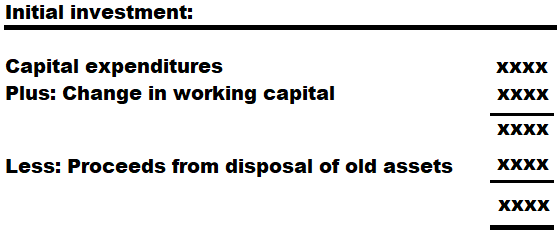
Ongoing research and innovation are essential to refine and optimize these systems further. Future advancements may make them more accessible and cost-effective.
Ongoing research and innovation are indeed pivotal in the world of aquaponics and hydroponics. These systems have already demonstrated their potential to revolutionize agriculture, but there is still much room for improvement and expansion.
Enhancing Accessibility:
As researchers continue to develop and refine aquaponics and hydroponics systems, one of the primary goals is to make them more accessible to a wider range of farmers. This includes simplifying system designs, reducing the complexity of setup, and creating user-friendly resources and guides. Future advancements might lead to more affordable starter kits and educational programs that empower individuals and communities to embrace these sustainable farming methods.
Cost-Effective Solutions:
Cost-effectiveness remains a significant challenge, especially for small-scale farmers and those in developing regions. Future innovations may focus on reducing the initial investment required for aquaponics and hydroponics systems. This could involve the development of affordable materials, low-cost technologies, and innovative financing options to enable a broader adoption of these practices.
Automation and Precision:
Advancements in automation and precision agriculture technologies will play a crucial role in the future of aquaponics and hydroponics. Integration with sensors, data analytics, and artificial intelligence could lead to more efficient resource management, including nutrient delivery, water usage, and environmental control. Automation can help farmers optimize their systems, reduce labor costs, and achieve consistent, high-quality yields.
Scaling Up Production:
Researchers are exploring ways to scale up aquaponics and hydroponics operations to meet the demands of larger markets and commercial farming. Future innovations may involve modular and scalable designs that can be customized to fit various production sizes. This could lead to more widespread adoption in urban farming, vertical farming, and even in regions with limited arable land.
Environmental Sustainability:
Sustainability is at the core of these farming methods, and future research will continue to focus on enhancing their environmental impact. Innovations might include the development of even more efficient nutrient cycling systems, improved waste management, and the use of renewable energy sources to power these systems, further reducing their carbon footprint.
In conclusion, the ongoing research and innovation in aquaponics and hydroponics hold the promise of making these systems not only more accessible and cost-effective but also more efficient and environmentally friendly. As these technologies continue to evolve, they are likely to play a pivotal role in addressing the challenges of food security, resource conservation, and sustainable agriculture in a rapidly changing world.
For additional details, consider exploring the related content available here Sunqiao Urban Agricultural District – Sasaki

Conclusion
Aquaponics and hydroponics represent a futuristic approach to farming that holds immense promise for sustainable agriculture. These methods are already contributing to food security, water conservation, and reduced environmental impact. As technology and expertise in this field continue to advance, it’s clear that aquaponics and hydroponics will play a crucial role in shaping the future of farming, helping us meet the challenges of a rapidly changing world while providing fresh, healthy, and locally grown produce year-round.
Aquaponics and hydroponics, often seen as the heralds of a futuristic agricultural revolution, are poised to reshape the very foundations of how we produce food. Their potential for sustainable agriculture reaches far and wide, offering solutions to some of the most pressing challenges facing our world today.
Year-Round Harvests: One of the most compelling aspects of aquaponics and hydroponics is their ability to enable year-round cultivation. These systems create controlled environments where factors like temperature, humidity, and light can be finely tuned to mimic ideal growing conditions. As a result, farmers can produce crops continuously, regardless of external weather conditions. This not only ensures a consistent food supply but also reduces our reliance on seasonal farming, making fresh produce available throughout the year.
Resource Efficiency: Aquaponics and hydroponics are champions of resource efficiency. Compared to traditional soil-based agriculture, they use significantly less water, a critical concern in regions facing water scarcity. Water in these systems is recirculated and reused, dramatically reducing consumption. Moreover, they require no soil, eliminating the need for extensive land use and potentially allowing farming in urban areas or places with poor soil quality.
Minimized Environmental Impact: The reduced need for pesticides and herbicides in these controlled environments translates to fewer chemicals entering the environment. Additionally, the elimination of soil reduces the risk of soil erosion and contamination, preserving natural ecosystems. By enabling localized production, these systems also cut down on the carbon footprint associated with long-distance transportation, contributing to lower greenhouse gas emissions.
Diverse Crop Options: Aquaponics and hydroponics open up exciting possibilities for diversifying crop choices. In these controlled environments, crops that may struggle in traditional settings due to climate or soil conditions can thrive. This means greater variety and availability of fresh produce, potentially reducing the monoculture practices that can lead to soil degradation and crop vulnerabilities.
Food Security: As the global population continues to grow, ensuring food security becomes paramount. Aquaponics and hydroponics offer a means to produce more food with fewer resources, helping us meet the rising demand sustainably. Additionally, their adaptability to various settings, from urban rooftops to arid regions, makes them valuable tools in addressing food security challenges in diverse contexts.
Innovation and Advancements: The journey of aquaponics and hydroponics is far from complete. Ongoing research and technological advancements in these fields promise to unlock even greater potential. From optimizing nutrient delivery to increasing automation for ease of operation, innovation is driving these systems toward higher levels of efficiency and productivity.
Education and Empowerment: These innovative farming methods also hold promise for education and community empowerment. They can be implemented in schools and community centers, teaching people of all ages about sustainable agriculture and providing hands-on experience in food production. This knowledge not only fosters greater appreciation for food but also equips communities to grow their own fresh produce.
In the face of climate change, growing populations, and resource constraints, aquaponics and hydroponics offer a compelling vision of a more sustainable and resilient agricultural future. They epitomize the fusion of cutting-edge technology and ecological wisdom, showing that the future of farming is not only bright but also rooted in innovative solutions that harmonize with our planet’s natural systems. As these methods continue to evolve, they are sure to play a pivotal role in nourishing our world while safeguarding its ecological health.
To delve further into this matter, we encourage you to check out the additional resources provided here: Aquaponics: The Basics | SpringerLink
More links
You can also read more about this here: Vertical Farming – No Longer A Futuristic Concept : USDA ARS
